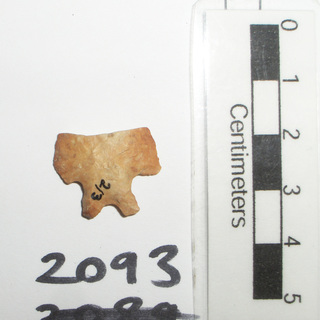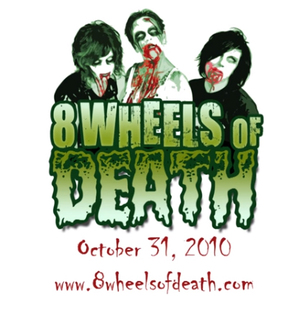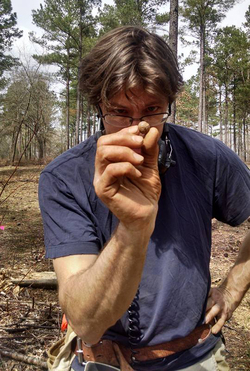 Can the distributions of small bifurcate points like this one be used to follow a northward retreat of hunter-gatherer populations at the end of the Early Archaic?
Can the distributions of small bifurcate points like this one be used to follow a northward retreat of hunter-gatherer populations at the end of the Early Archaic? I finally finished reading Ken Sassaman's (2010) The Eastern Archaic, Historicized (previous posts here and here). I had a nice email exchange with Sassaman. Reading his book has gotten me thinking about some new questions to ask of the Archaic record in the Eastern Woodlands. The suggestion that a large part of the Southeast (south of the Ohio River) was abandoned or very thinly populated/used during the later part of the Early Archaic, connected to the scenario of a population influx during the Middle Archaic, is something that can be evaluated empirically by (I think) assembling data that we've already got on hand. The northward retreat of Early Archaic populations that seems to be marked by the distribution of bifurcate points in South Carolina (see David Anderson's 1991 paper referenced in this post) prompted me to look into Early Archaic point chronology in Florida. Sassaman directed me to this very nice (2012) paper by Michael Faught and James Waggoner. Faught and Waggoner's discussion of multiple lines of data (radiocarbon, typological, and statigraphic sequences) relevant to evaluating the idea of Early/Middle Archaic population discontinuities in Florida could be used as a blueprint for state-by-state studies across the east.

This post marks two firsts: my first mention of roller derby and my first movie review. The short film Eight Wheels of Death is a homegrown effort associated with the Bleeding Heartland Roller Derby in Bloomington, Indiana. I picked up a copy when I went to see my daughter skate last weekend (she's in the junior league Bloomington ThunderBirds). The movie is about what you'd expect, and that's going to be the extent of my review (here's the trailer).It was not the cinematography that made it worth $7 to me, but the fact that purchasing it supports roller derby. I was pretty impressed with the creativity, energy, and team-building that I saw both at my daughter's practice and at the actual event. I didn't see much of the adult league match (a hometown contest between the Farm Fatales and the Slaughter Scouts) because I got drafted for a shift in the concession stand, but I came away with both a lot of positive feelings and substantial curiosity about roller derby. As best I can tell, we're now in at least the fourth or fifth generation of popularity of roller derby. There's a really interesting history as to how this activity has changed over the decades as its popularity has cyclically risen and fallen. I'm not anywhere close to understanding it, but it's fascinating. And it's also got me pondering why and under what circumstances we sometimes (but not always) describe cultural/technological change as "generational." It seems like identifying "generations" is kind of a real-time way of temporal typologizing (imposing nominal categories on more-or-less continuous variation). We do it for fighter aircraft and roller derby, but not for basketball and cars.
 Lead ball fired from a colonial era Charleville or Brown Bess musket.
Lead ball fired from a colonial era Charleville or Brown Bess musket. I spent Friday working with Steve Smith (Director of SCIAA) and two volunteers on a survey at Fort Motte, site of a Revolutionary War siege and battle. There is a lot of interesting historic period archaeology here, and going out with Steve was a nice opportunity to participate and learn something new. Steve and Jim Legg are using systematic metal detecting survey, among other things, to try to pin down where on the landscape various parts of the Fort Motte story unfolded. Yesterday we were working in the general area where some of the Patriot forces would have been camped during the siege. We found several good colonial-period artifacts (e.g., a musket ball, cast iron kettle fragments, and a brass finial probably from a flag or spontoon), I got some experience using a metal detector, and had a good time talking with the volunteers. I also saw the first dragonfly I've seen so far this year, and got to complain about the early March heat. It really is a different world down here as far as the weather. I'm going to need to hustle if I'm going to get any of my own fieldwork going before the spring explosion of plant growth makes things like long distance total station work impossible.
Various promises and hints about the release of the 200-page paper that will present the case for the "Roman sword from Nova Scotia" have yet to turn into anything tangible, and I've stopped paying attention. The last I heard (weeks ago), at that was left to prepare the document was completion of spell check. The "just around the corner" nonsense is boring. Somebody please wake me up if the paper ever materializes.


 RSS Feed
RSS Feed
